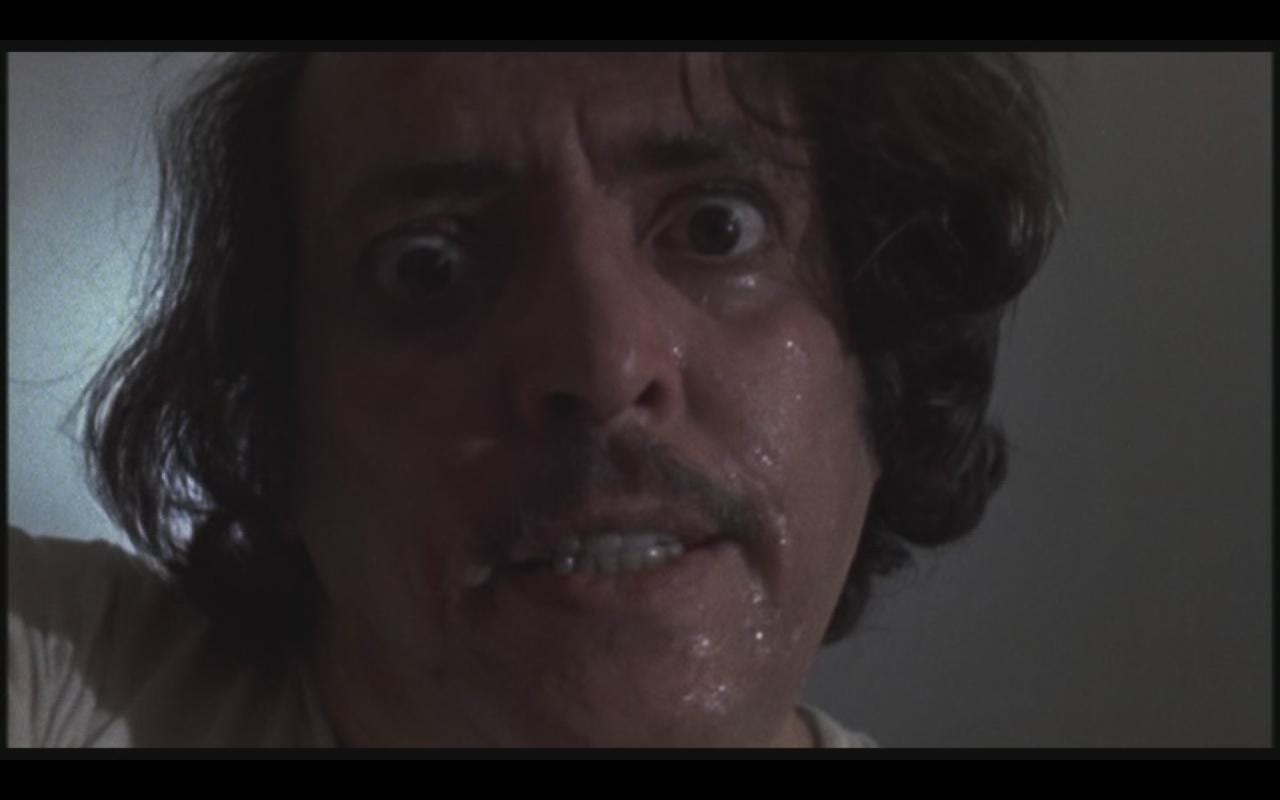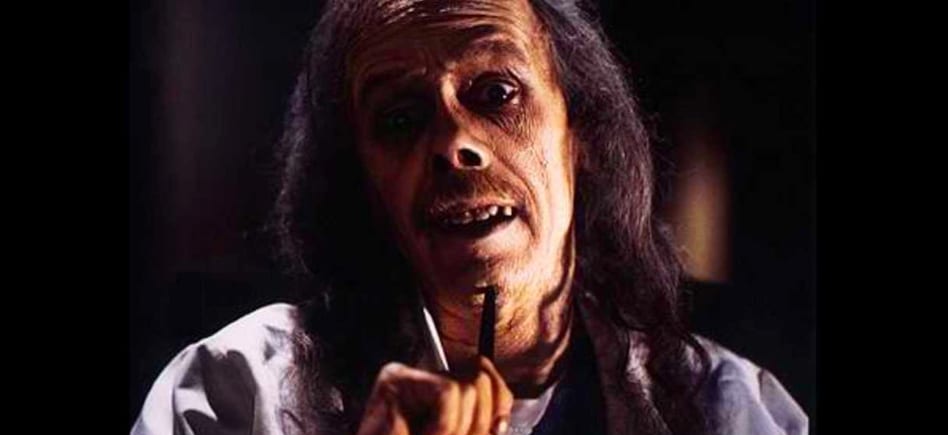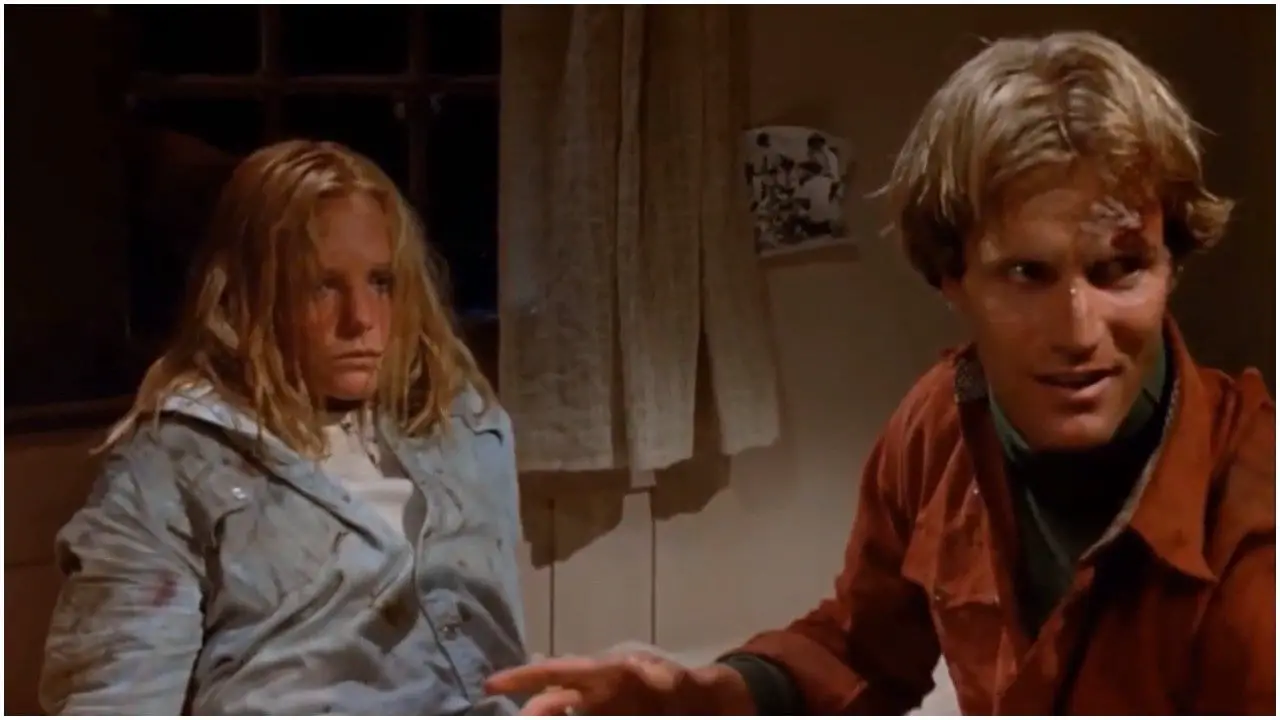Death to Smoochers
While there are other slasher movie tropes—such as the use of POV shots, musical motifs associated with the killers, and the killers’ tendency to wear masks—the two closely related, much-maligned tropes of “sex equals death” and the “final girl” are, for better or worse, perhaps the subgenre’s two most defining characteristics. The “sex equals death” trope is rather self-explanatory: if you have sex in a slasher film, you will die. The “final girl” refers to the last character left alive, the one who confronts and usually defeats the killer, at least temporarily. This character is almost always female and is often depicted as more morally “pure” than other characters, i.e. she doesn’t have sex or drink and take drugs like her friends (for the “final girl”, there is neither sex nor champagne in the champagne room). Thus, there is a direct connection between these two slasher movie tropes; if you don’t have sex, you don’t die, and you get to be a “final girl”.*
*For the sake of this discussion, I am going to accept abstinence from sex, drugs, and Rolling Rock as a given for “final girls,” despite the fact that there are several instances—including some very notable ones—of these characters NOT being depicted as chastity belt clad teetotalers, especially in the very early slasher films. However, as the subgenre boomed, this characterization would become more prevalent, to the point that it was fairly well established by the mid-’80s.

One major reason these tropes have come in for such harsh criticism over the years, especially from film critics and other arbiters of good taste, is that they are purportedly indicative of a repressive, ultraconservative moralism lying just beneath the surface of these films. This argument posits that from this moralism stems the desire to punish transgression and reward moral “purity.” In this formulation, sexual transgression is, unsurprisingly, the offense most worthy of punishment; furthermore, any sexual activity engaged in by unmarried teenagers qualifies as transgression. In some cases, where the killer’s motives are explicitly tied to the punishment of horny teenagers, as in the original Friday the 13th, this morality becomes not merely subtext but part of the text itself.
In other cases, where the killer’s motivation would seem to have nothing to do with sex, such as in The Burning or any number of other slashers, we are meant to understand that the same morality is still at work behind the scenes and that these films are still really about the righteous murder of fornicators. The killers in these films then are always proxies of the filmmakers and the society that has shaped them; they embody a prevailing attitude within the larger society, one presumably shared (consciously or not) by the male directors, screenwriters, and producers of these films. In real life, these killers’ actions would, of course, be far beyond the pale; as fiction, however, they are quite acceptable, even welcome. These slasher movie tropes, then, represent merely a logical extension of the punitive morality pervading the culture that produced them, a morality quick to judge and punish “sinners,” particularly the young and especially if they are young women.

What Evil Lurks in the Minds of Men?
Integral to this argument is the claim that this moralism can find its way into these films through the unconscious, underlying beliefs and assumptions of the filmmakers; this is supposed to make this argument easier to accept. After all, we don’t have to believe that all of these people consciously want to punish young people (especially women) for their sexual freedom. We only have to accept that they unconsciously want that. Although the claims of psychoanalysis notwithstanding, I would argue that we can’t ever really know what anyone unconsciously wants. Thus, we need not believe that people like John Carpenter and Sean S. Cunningham were consciously sexist or misogynist, only that they were unknowingly influenced by the deeply ingrained sexism and misogyny of the larger culture.
Now, I am not foolish enough to argue that individuals are not affected, in different ways and to various degrees, by the beliefs and values—spoken or unspoken—of the societies in which they live. Furthermore, I am not so ignorant that I would deny the undercurrents of sexism and misogyny that run through our culture historically, and sadly, even today. However, I also believe that people—especially if they are even moderately reasonable and thoughtful—are capable of thinking and acting of their own volition and that not every decision or action is necessarily or entirely socially determined. Perhaps I am naïve, but I take these filmmakers at their word when they say that their intention was not to make films about punishing young libertines (“liberteens”?) for flaunting their sexuality.

Keep It Simple, Stupid
Importantly, the argument that these slasher movie tropes reflect some deeply ingrained puritanical moralism also overlooks a more obvious, though perhaps less exciting, explanation. If we apply Occam’s razor (as well as his machete, axe, meat cleaver, hatchet, scalpel, chainsaw, and power drill), it seems likely that the reason these movies featured heavy doses of sex and violence is that both elements were—as they are now and have been for literally thousands of years—major draws for certain audiences. In this case, these movies were made to appeal primarily to young men (though plenty of young women went to see them too). That audience, as a rule, wants to see two things in its entertainment: sex (or at least nudity) and violence (possibly murder, but also just violence generally). This is particularly true of young men, of course, but once again there were more than a few young ladies who thrilled to these films’ heady brew of slashing and screwing. Just how potent this combination was is evident in the box office receipts piled up during the slasher boom (roughly 1980 to 1984). Eventually, of course, the slashers lost their charm, at which point audiences went elsewhere for their sex and violence.
The fact is that the vast majority of characters in slasher films have sex and die because those are the only two things that they need to do to serve their purpose in the movie. However, that’s not the same as saying that they have sex in order to be subsequently punished for doing so. If anything, the formula of these films is closer to “sex and death” than “sex equals death.” The “sex equals death” trope then seems to hinge largely on the “final girl” trope for any semblance of validity. Might the persistence of the “final girl” trope and its frequent connection, direct or implied, to moral “purity” suggest that perhaps there is some validity to the “sex equals death” claim? After all, if the only character who isn’t having sex is the only one who survives, then sex must be the deciding factor, right?
Well, perhaps, but probably not in the sense that death is the punishment for sex. Rather, it may be that the people having sex in these movies usually die simply because they’re not paying attention. On the other hand, whilst her cohorts are off cavorting, dropping their pants and their guard, the final girl is usually more keenly aware of what is going on around her. Not only is she not distracted by having sex, but she’s also not distracted by constantly thinking about having sex, as all of her friends seem to be. We might add to this that she’s also typically not getting high or drunk and thus still has her wits about her. So, is it a moral judgment that she survives? Is she a “final girl” because she is a “good girl”? Or is it an observation that, practically speaking, this is likely the kind of person who actually would survive in this situation?

Sometimes, a Knife Is Just a Knife
Clearly, such explanations of slasher movie tropes aren’t nearly as sexy as the hypothesis that “Sex equals death in slasher films because they reflect the larger society’s deeply ingrained discomfort with all things sexual and, in particular, its contempt for those who engage in sexual activity freely and without guilt, especially if those people are young, and even more especially if they are young women.” They do, however, make a great deal of sense. The explanation regarding the survival of the “final girl” is, in fact, the exact one that John Carpenter has been providing for years whenever the topic of Halloween receiving the credit/blame for creating these tropes in the first place comes up.
While Halloween might seem to suggest a connection between sex and death, mainly through its opening scene, ultimately that connection is not borne out by the rest of the film. However, even if the opening’s suggestion of such a link was supported by the rest of the film, it would exist within the narrative because it exists in the mind of the killer, not of anyone else. In such a film, Michael Myers would be a disturbed sexual rage killer, one whose primary source of disturbance would seem to be his frustrated incestuous desire for his older sister.
There are, of course, films in which the killer’s derangement is clearly psychosexual in nature (such as Maniac or the one about the psycho and his dead mom…Ed and His Dead Mother). However, in these films, these elements are simply plot points and character traits; they aren’t necessarily indicative of any particular feelings (conscious or otherwise) that the filmmakers have toward sex and morality. In the case of Halloween and most slasher films, they aren’t even about sexually motivated killers. In Halloween, the killer is meant to be understood as a physical embodiment of pure evil, which makes attempts to argue about the film’s deeper implications or to wrangle its sexual politics particularly absurd.
Playing to the Base
In Halloween, and in slashers generally, death is, at most, an indirect result of sex, not a punishment for it. Readings of slasher movie tropes that seek to impute a thematic connection between sex and death reek of analytic overreach. They advance arguments with scant supporting evidence and overlook ample evidence that would suggest other explanations. The link between sex and death in these films is mundanely simple and surface-level; it is one of narrative convenience and audience appeasement. On that note, lest we subject the audiences for these films—then and now—to undue psychoanalytic probing (if you will), I would note that the desire to see both sex and death need not be causally or otherwise linked in any profound way; they are merely concurrent drives and neither inherently unnatural nor dangerous.
In the case of slasher movie tropes, the social phenomena at play are decidedly less complex than they have often been made out to be; in the end, the slasher craze is best understood as merely one phase, though perhaps a particularly idiosyncratic one, in the ongoing cycle of supply and demand that determines the shape and direction of popular culture. With slashers, the demand is admittedly base, but it usually is. In simple and alliterative terms, we beg for bare bods and bloodbaths, crave coitus and carnage, and demand debauchery and death. Crude, yes, but really no more so than it was in Sophocles’ or Shakespeare’s time.
Questions of high vs low art aside, the ancient Greeks, the Elizabethan dramatists, and the likes of Sean S. Cunningham and Joseph Zito were suppliers meeting the demands of their audiences. Now, the question of why we desire violence in our entertainment (I think we have a pretty firm grasp on the sex part, so to speak) is a valid question and one that has been explored at great length and yielded some interesting insights. However, this is a question with broad implications, certainly far broader than what is allowed for by a narrow, and frankly unfair, focus on the violence specific to slasher films—or horror films generally, for that matter.





One Comment
Leave a Reply